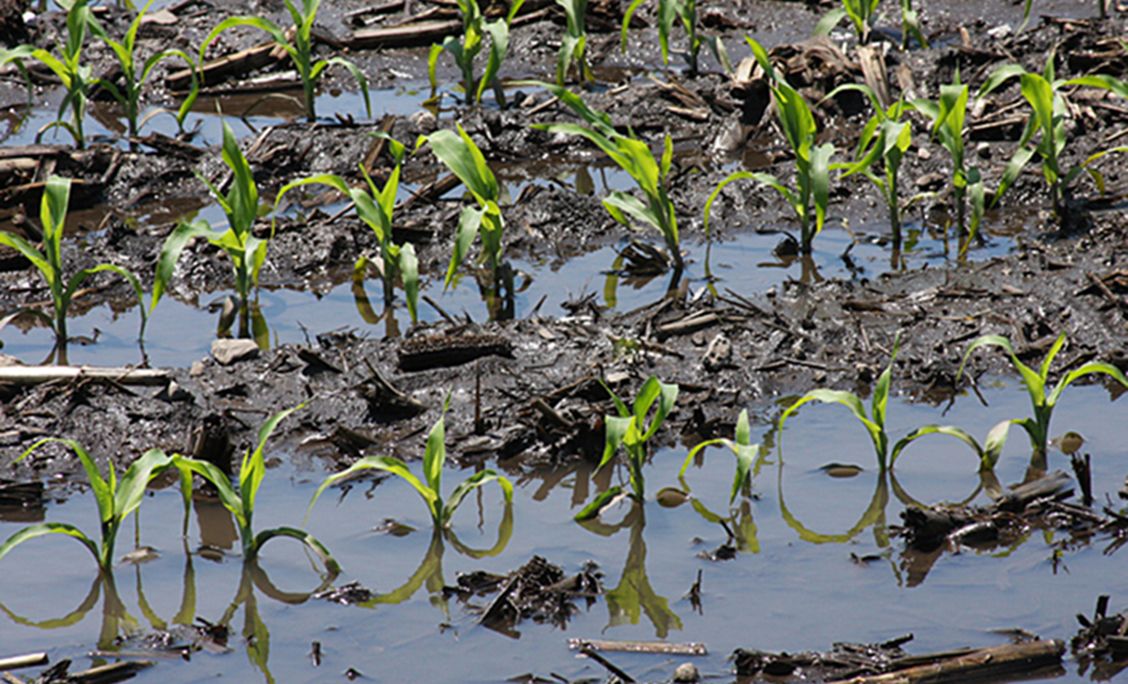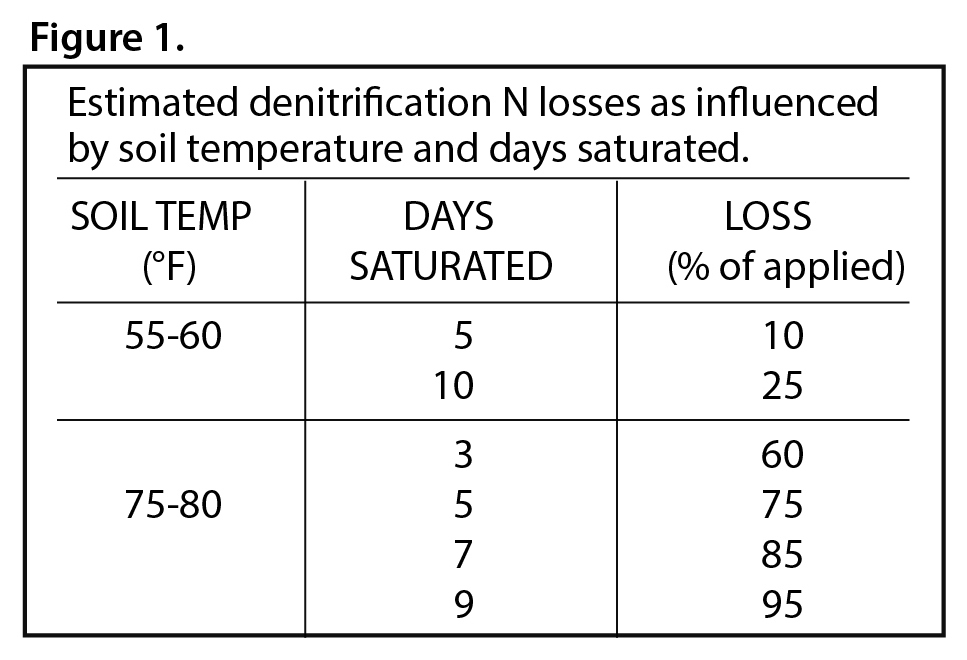
Corn seedlings under flooded conditions. Photo courtesy of R.L. (Bob) Nielsen, Purdue University.
Summer rain events can lead to many fields with saturated and flooded soils. Areas of those fields that are not flooded with standing water may still remain saturated for an extended period of time. Survival of corn plants is dependent on temperature, stage of growth and length of time the soil is saturated.
Corn Survival in Saturated Soils
1. Completely submerged corn is at higher risk than partially submerged corn.
2. Soil oxygen is depleted within about 48 hours of soil saturation.
3. Young corn plants can survive up to 4 days of ponding if temperatures are in the mid-60s or cooler. With warmer temperatures, plants will not be able to survive as long.
4. Surface crusts will form if water subsides and the soil dries quickly.
5. Roots don’t grow in saturated soils and won’t resume growth until oxygen is restored.
6. Wet soil conditions will promote the development of seedling blight diseases, especially Pythium. Diseases such as common smut and crazy top also become a much higher risk when corn seedlings are exposed to flooding.
Assessment and Management
It is best to wait about five days after a flooding event to fully assess your crop. You will need to determine how many plants are still alive and if the remaining stand warrants replant. Plants that survived will have a healthy growing point and the appearance of fresh leaves growing from the whorl. The health of the growing point can be assessed by splitting the stalk of an affected plant. A healthy growing point will be firm and white or yellow in color.
As with any replant situation, it is best to use a formula that takes into account the number of surviving plants and possible replant date to evaluate whether replanting would be more profitable than leaving the current stand. Using a replant calculator will help you to make a management decision based on economics and not on emotion. You can find the Wyffels Replant Calculator here.
Nitrogen Loss
A secondary consequence of flooded or saturated soils is the loss of nitrogen (N) via denitrification and leaching.
This table shows the amount of N loss from denitrification at given soil temperatures and days saturated.

Nitrogen loss is more likely in low areas of the field where ponding occurs and more water is moving through the soil profile. If field conditions permit, a supplemental N application may be needed to ensure the corn crop has enough N to reach its full yield potential.

A Silver Lining
One good thing that can come from saturated soils during late May and early June is its effect on rootworm larvae survival. One of the few weak points in corn rootworms’ life cycle is the period when larvae are hatching from eggs. In order for rootworm larvae survival to be affected, soils must be saturated long enough to suffocate larvae as they are hatching and in the early part of their life cycle.
The timing of larval hatch is dependent upon heat units and will vary across the Corn Belt. Research shows that fifty percent of corn rootworm larvae will hatch from 684 to 767 accumulated growing degree days, starting January 1. Most years rootworm larvae will hatch about the same time lightning bugs appear. You can determine how many growing degree days have been accumulated in your area by using the Wyffels Growing Degree Unit Calculator found here.
Conclusion
The full extent of damage from flooding and saturated soils cannot be seen until the corn plant has a chance to recover. Knowing what factors affect damage and survivability, and what signs to look for when assessing plant health will help you make the best decision for the long-term success of your corn crop.
